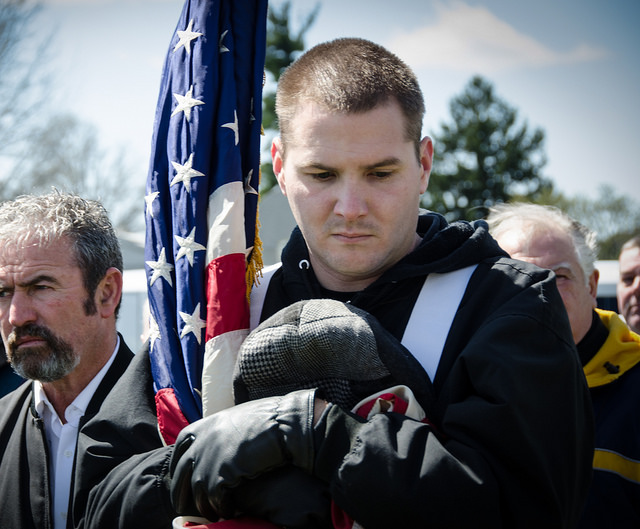He stood about 6’4”, had a square jaw, and a good sense of humor. During the American revolution, Commodore John Barry was hailed by British frigates as he sailed into the West Indies. When they questioned him about the name of his ship and its captain, he quipped, “The United States ship, Alliance, saucy Jack Barry, half Irishman, half Yankee—who are you?”
Just like an Irishman—answering a question with a question (and some sarcasm thrown in there for good measure).
Though to most Philadelphians, Commodore Barry is just a bridge crossing the Delaware, the man for whom the span is named was a superhero of his day. The County Wexford-born son of a subsistence farmer and an émigré to Philadelphia was tapped by the Continental Congress to launch the new nation’s Navy. “Saucy Jack Barry” (better known to others as “Big John Barry” because of his imposing height) took over the merchant ships Congress acquired in 1775 and fitted them as vessels of war. The British were better equipped and more experienced, but Barry had Irish cunning on his side. After several of his ships were lost to the enemy, Barry turned to small craft that allowed him to sneak up on the British and capture their store ships, intercepting needed supplies.
“In the middle of winter, he attacked the British in the lower Delaware with a bunch of rowboats he commandeered from various vessels,” explains John Barry Kelly, a Drexel Hill man who shares a family tree with the naval hero. “He was very daring and aggressive, unfazed by adverse odds. He once successfully fought a frigate (ironclad war ship) and ship of the line (a large, powerful battleship) simultaneously off the coast of Maine.”
While John Paul Jones (“I have not yet begun to fight”) eventually became more famous for his own daring exploits against the British in their own waters, Barry kept his eye on the U.S. East Coast, traveling from Newfoundland to the Florida Keys, engaging the enemy whenever he encountered them. “His celebrity came when brought the first captured British ship into Philadelphia harbor in 1776, the early part of the revolution, which was a source of pride to new Americans,” says Kelly, who works for Independence National Historical Park just a couple of blocks from the statue of his famous relative. (It’s on the south corner of Independence Hall.)
Barry also captured two British ships after being severely wounded in battle. (In a show a gallantry, he returned the surviving British commander’s sword. “I return it to you, Sir,” Barry said after meeting the commander in his cabin, where he was recovering from his injuries. “You have merited it, and your King ought to give you a better ship. Here is my cabin, at your service. Use it as your own.”)
“In the 18th century, he was known as top-notch mariner apart from his military activity,” says Kelly. “He set a speed record never duplicated in 18th century. By dead reckoning, he was able to traverse 237 miles in 24 hours, which had never been done. He was also quite composed in dire circumstances. For example, when taking American ministers to Europe, a terrible storm blew up, and he was able to maintain control of the ship. [Founding father] Thomas Paine commented on how well he handled the vessel. He seemed to have great ability to handle crises.” And he had plenty of them. By the time the battle for independence was won, Barry had put down three mutinies, captured more than 20 ships, and fought the last naval battle of the American Revolution aboard his frigate, Alliance, in 1783.
On Sunday, May 27, the Friendly Sons of St. Patrick (a local organization of which Barry was a member), honored this amazing Revolutionary War hero in a day-long ceremony, starting with a commemorative mass at 11:30 a.m. at Old St. Mary’s Church—Barry’s parish church and where he was buried in 1803, at the age of only 58. After a wreath-laying, representatives of the Friendly Sons, the Ancient Order of Hibernians, the Commodore Barry Club of Philadelphia (The Irish Center) and the Barry Club of Brooklyn and others processed to Independence Hall where a statue of Barry stands, his right arm pointing into the distance. A reception and luncheon followed at the Commodore Barry Club in the Mount Airy section of the city.
For those who took part, it was a great opportunity to get to know a local Irish-American hero. And they’ll never look at that bridge the same way again.Read a history of Commodore John Barry by John Barry Kelly at www.ushistory.org/people/commodorebarry.htm

